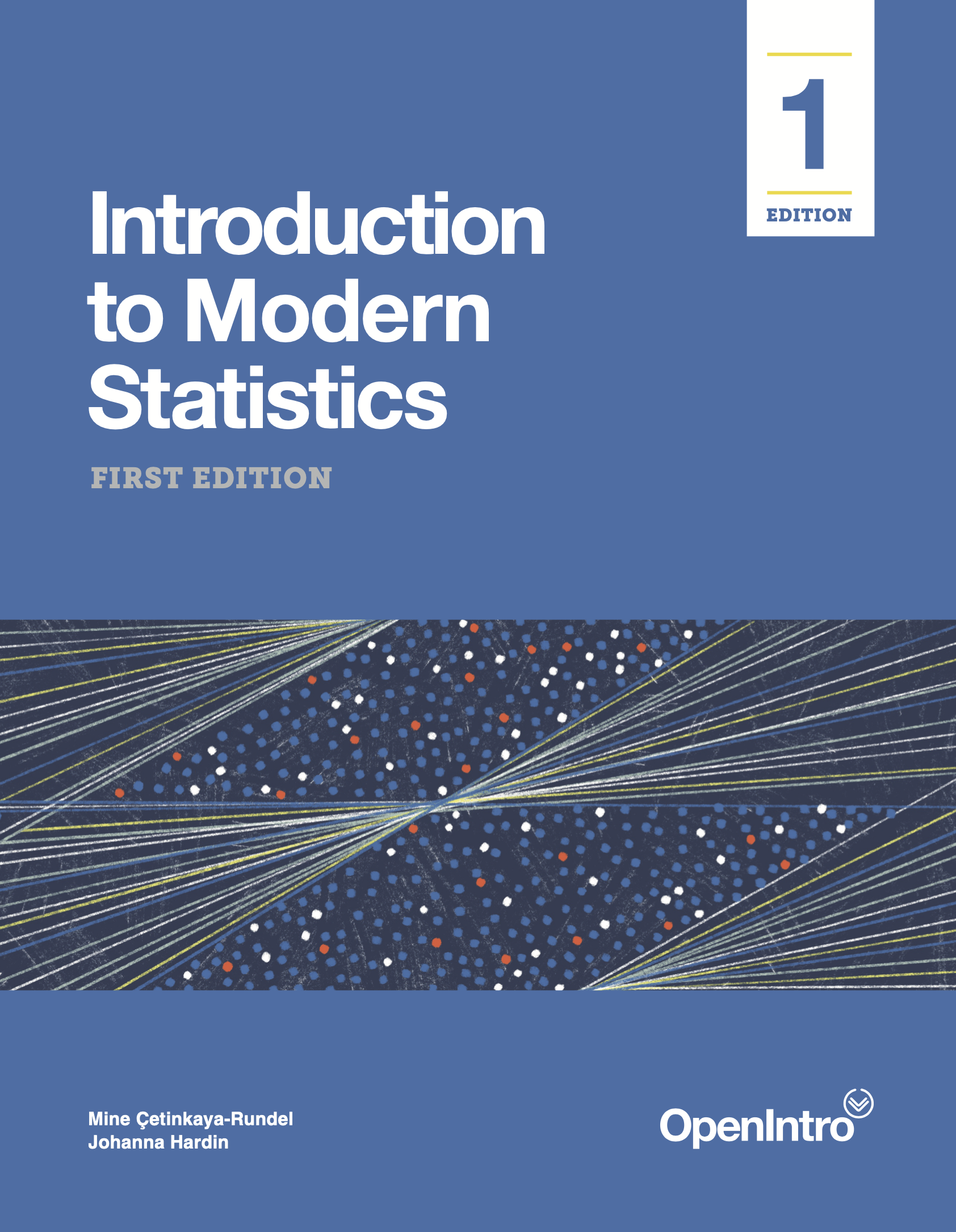Download Introduction to Modern Statistics PDF Free - Full Version
Download Introduction to Modern Statistics by Mine Çetinkaya-Rundel & Johanna Hardin in PDF format completely FREE. No registration required, no payment needed. Get instant access to this valuable resource on PDFdrive.to!
About Introduction to Modern Statistics
<p>We hope readers will take away three ideas from this book in addition to forming a foundation of statistical thinking and methods.</p> <ol><li>Statistics is an applied field with a wide range of practical applications.</li><li>You don’t have to be a math guru to learn from interesting, real data.</li><li>Data are messy, and statistical tools are imperfect. However, when you understand the strengths and weaknesses of these tools, you can use them to learn interesting things about the world.</li></ol> <br>Textbook overview <ul><li> Part 1: Introduction to data. Data structures, variables, summaries, graphics, and basic data collection and study design techniques.</li><li> Part 2: Exploratory data analysis. Data visualization and summarization, with particular emphasis on multivariable relationships.</li><li> Part 3: Regression modeling. Modeling numerical and categorical outcomes with linear and logistic regression and using model results to describe relationships and make predictions.</li><li> Part 4: Foundations for inference. Case studies are used to introduce the ideas of statistical inference with randomization tests, bootstrap intervals, and mathematical models.</li><li> Part 5: Statistical inference. Further details of statistical inference using randomization tests, bootstrap intervals, and mathematical models for numerical and categorical data.</li><li> Part 6: Inferential modeling. Extending inference techniques presented thus-far to linear and logistic regression settings and evaluating model performance.</li></ul> <p>Each part contains multiple chapters and ends with a case study. Building on the content covered in the part, the case study uses the tools and techniques to present a high-level overview.</p> <p>Each chapter ends with a review section which contains a chapter summary as well as a list of key terms introduced in the chapter. If you’re not sure what some of these terms mean, we recommend you go back in the text and review their definitions. We purposefully present them in alphabetical order, instead of in order of appearance, so they will be a little more challenging to locate. However, you should be able to easily spot them as bolded text.</p> </br>
Detailed Information
| Author: | Mine Çetinkaya-Rundel & Johanna Hardin |
|---|---|
| Publication Year: | 2021 |
| Pages: | 549 |
| Language: | other |
| File Size: | 49.1851 |
| Format: | |
| Price: | FREE |
Safe & Secure Download - No registration required
Why Choose PDFdrive for Your Free Introduction to Modern Statistics Download?
- 100% Free: No hidden fees or subscriptions required for one book every day.
- No Registration: Immediate access is available without creating accounts for one book every day.
- Safe and Secure: Clean downloads without malware or viruses
- Multiple Formats: PDF, MOBI, Mpub,... optimized for all devices
- Educational Resource: Supporting knowledge sharing and learning
Frequently Asked Questions
Is it really free to download Introduction to Modern Statistics PDF?
Yes, on https://PDFdrive.to you can download Introduction to Modern Statistics by Mine Çetinkaya-Rundel & Johanna Hardin completely free. We don't require any payment, subscription, or registration to access this PDF file. For 3 books every day.
How can I read Introduction to Modern Statistics on my mobile device?
After downloading Introduction to Modern Statistics PDF, you can open it with any PDF reader app on your phone or tablet. We recommend using Adobe Acrobat Reader, Apple Books, or Google Play Books for the best reading experience.
Is this the full version of Introduction to Modern Statistics?
Yes, this is the complete PDF version of Introduction to Modern Statistics by Mine Çetinkaya-Rundel & Johanna Hardin. You will be able to read the entire content as in the printed version without missing any pages.
Is it legal to download Introduction to Modern Statistics PDF for free?
https://PDFdrive.to provides links to free educational resources available online. We do not store any files on our servers. Please be aware of copyright laws in your country before downloading.
The materials shared are intended for research, educational, and personal use in accordance with fair use principles.

